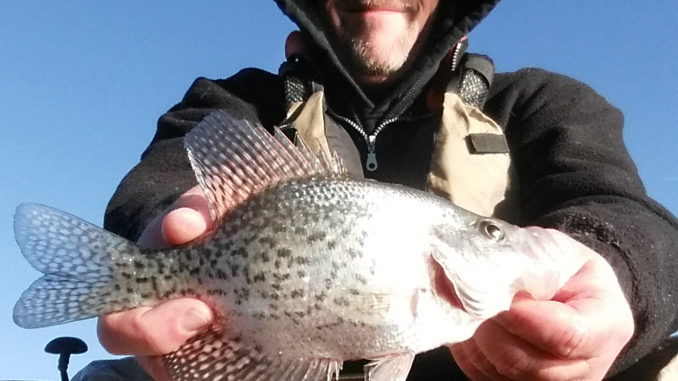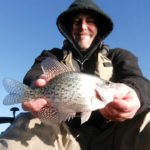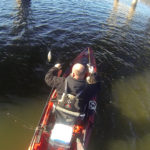
Kayaks are great vessels for February crappie
The day was projected, according to weather forecasters, to be as beautiful as a winter day could be. Slight winds with a mid-day high in the lower 50s did not seem unbearable. After all, deer season had ended, ducks prefer the nastiest weather Mother Nature can create, and no one wants to miss spending this day in the outdoors.
The kayak was loaded on top of the truck, where it had been for a few months since its last visit to the water, so the checklist highlighted the fishing necessities. Paddle? Check. PFD? Check. Rods and reels? Check. Hooks? Check. Weights? Check. Minnows? Will be checked.
After arriving at the boat dock, the kayak was lowered into the water and loaded with the equipment. If things went well, the bucket in the back of the kayak would be filled with slabs, checkerboards, papermouths or whatever other term you may use. Most people call them crappie.
Just because the water temperature has dipped does not mean fishing is out of reason. Crappie are the go-to cold-weather fish in freshwater. You just need to know where to fish and what to use.
Crappie head deep when winter sets in. Any deep water that has some type of structure is the ideal crappie habitat. The secret is to catch one crappie. Because crappie are a schooling fish, if you catch one, you have found the school.
A variety of baits and lures are available. You can jig artificial baits or use insects such as crickets. You may luck up and catch one on a worm. But the best bait to use by far is a live minnow.
Because crappie school, you will often see something called a spider rig. Basically, this is an aggressive technique in which several poles are positioned off the bow, stern or both in order to find and catch fish.
On each rod, there is a weight and one or several lines branching about 6 inches from the main line with a hook for the bait. These branching lines may vary in depth in order to find where the fish are suspended. One thing you can try is tying a line and hook to a barrel swivel. Take the main line and form a loop that you put through the open eyelet of the barrel swivel and pull the loop over the tied line. This allows you to adjust the depth of the jig by moving the barrel swivel up or down the main line. You can also easily add more branched lines to the main line. Of course, there are many other techniques as well.
You want live minnows. To keep them alive on the hook it fairly easy. Run the hook through the bottom lip and up through the upper lip. To keep them alive in the kayak or canoe is a different story. Unlike bass boats or john boats, built-in live wells are not common kayaks.
There are plenty of bucket-style livewells in which you can keep your bait thriving, but two issues come into play. One, the containers do not always fit in the kayak very well. Two, the water needs to be changed or aerated to keep the minnows alive.
You can hang some styles of bait buckets over the side, but in cold weather — and particularly, cold water — you have to be careful and have a way to warm your hands back up.
One set-up that fits particularly well in a kayak is a square pet-food containers with a round hatch set at a 45-degree angle. Since most kayaks are “crate ready” — the common milk crate fits behind the seat — a square pet-food container fits nicely. A battery powered aerator can be added to the side of the container, and you have an instant baitwell that can be easily removed and used for dry storage when you are not using live bait.
The only thing left is to wait for that nice-for-winter day, get the kayak in the water, and fish.





Be the first to comment